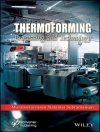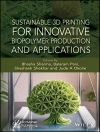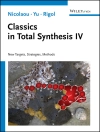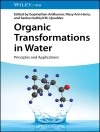Develop natural solutions to biomedical problems with this introduction
A natural polymer is one that forms from biosynthetic or biochemical processes typically found in nature, with corresponding advantages in biocompatibility and biodegradability. These advantages give natural polymers a range of applications, from the use of polysaccharides as structural components to the use of polyphenols as antioxidant active ingredients. In biomedical engineering they are clearly preferable to synthetic polymers in numerous cases, and their applications are more numerous every day.
Natural Polymers for Biomedical Applications offers a comprehensive summary of these polymers and their biomedical applications. It covers the sources, structures, and properties of polysaccharides, polyphenols, and polypeptides, as well as analyzing the latest advances in polymer-based biomedical technologies. The result has ramifications in a vast range of industries and research areas.
In Natural Polymers for Biomedical Applications readers will also find:
- Applications including drug and cell delivery, cell and organoid cultures, tissue regeneration, and more
- Detailed analysis of alginate, cellulose, quercetin, silk fibroin, and many others
- A logical, easy-to-use structure to facilitate rapid access to pertinent information
Natural Polymers for Biomedical Applications is ideal for materials scientists, polymer chemists, biochemists, and any researcher or professional in biomedical or pharmaceutical industries.
Зміст
Graphical Abstract xi
Foreword xiii
Preface xvii
Acknowledgments xix
Section I Historical Review of the Development of Natural Polymers 1
References 3
Section II Polysaccharides for Biomedical Application 5
1 Sources, Structures, and Properties of Alginate 7
1.1 Alginate-Based Hydrogel for Biomedical Application 8
1.1.1 Drug and Cell Delivery 8
1.1.2 Cell and Organoid Culture 13
1.1.3 Tissue Regeneration 15
1.1.4 Other Applications 18
1.2 Alginate-Based Electrospinning for Biomedical Application 21
1.2.1 Drug Delivery 21
1.2.2 Tissue Regeneration 23
1.3 Alginate-Based 3D Printing for Biomedical Application 28
1.3.1 Alginate-Based Bio-Ink and Printing Strategies Improvement 28
1.3.2 Attempts at Bionic Matrix Ink 29
References 31
2 Sources, Structures, and Properties of Cellulose 39
2.1 Cellulose-Based Hydrogel for Biomedical Application 39
2.1.1 Drug Delivery 39
2.1.2 Cell and Organoid Culture 44
2.1.3 Tissue Regeneration 45
2.2 Cellulose-Based Electrospinning for Biomedical Application 49
2.2.1 Drug Delivery 49
2.2.2 Antibacterial 51
2.2.3 Tissue Regeneration 52
2.3 Cellulose-Based 3D Printing for Biomedical Application 55
2.3.1 Improvement of Bio-Ink 55
2.3.2 Bacteria and Cell Culture 57
References 59
3 Sources, Structures, and Properties of Hyaluronic Acid 65
3.1 Hyaluronic-Acid-Based Hydrogel for Biomedical Application 66
3.1.1 Cell and Organoids Culture 66
3.1.2 Cell Behaviors Regulation 67
3.1.3 Drug Delivery 70
3.1.4 Tissue Regeneration 71
3.2 Hyaluronic-Acid-Based Electrospinning for Biomedical Application 74
3.2.1 Drug Delivery and Antibacterial 74
3.2.2 Tissue Regeneration 75
3.3 Hyaluronic-Acid-Based 3D Printing for Biomedical Application 77
3.3.1 Cell and Organoid Culture 77
3.3.2 Tissue Regeneration 78
References 81
4 Sources, Structures, and Properties of Chitosan 85
4.1 Chitosan-Based Hydrogel for Biomedical Application 85
4.1.1 Cell and Organoid Culture 85
4.1.2 Tissue Regeneration 86
4.2 Chitosan-Based Electrospinning for Biomedical Application 91
4.2.1 Drug and Cell Delivery 91
4.2.2 Tissue Regeneration 92
4.3 Chitosan-Based 3D Printing for Biomedical Application 95
4.3.1 Cell Behavior Regulation 95
4.3.2 Drug Delivery 95
4.3.3 Tissue Regeneration 95
References 98
5 Sources, Structures, and Properties of Other Polysaccharides 101
5.1 Other Polysaccharides-Based Hydrogel for Biomedical Application 102
5.1.1 Drug Delivery 102
5.1.2 Cell and Organoid Culture 103
5.1.3 Tissue Regeneration 104
5.2 Other Polysaccharides-Based Electrospinning for Biomedical Application 107
5.2.1 Drug Delivery 107
5.2.2 Tissue Regeneration 107
5.3 Other Polysaccharides 3D Printing for Biomedical Application 109
5.3.1 Drug Delivery 109
5.3.2 Tissue Regeneration 109
References 110
6 Summary 113
Section III Polypeptides for Biomedical Application 115
7 Sources, Structures, and Properties of Collagen 117
7.1 Collagen-Based Hydrogel for Biomedical Application 117
7.1.1 Drug Delivery 117
7.1.2 Cell and Organoid Culture 119
7.1.3 Cell Behavior Regulation 119
7.1.4 Tissue Regeneration 120
7.2 Collagen-Based Electrospinning for Biomedical Application 121
7.2.1 Cell and Organoid Culture 121
7.2.2 Tissue Regeneration 122
7.3 Collagen-Based 3D Printing for Biomedical Application 122
7.3.1 Tissue Regeneration 122
References 124
8 Sources, Structures, and Properties of Gelatin 127
8.1 Gelatin-Based Hydrogel for Biomedical Application 127
8.1.1 Cell Culture and Behavior Regulation 127
8.1.2 Drug Delivery 129
8.1.3 Tissue Regeneration 129
8.2 Gelatin-Based Electrospinning for Biomedical Application 129
8.2.1 Cell Culture 129
8.2.2 Tissue Regeneration 130
8.3 Gelatin-Based 3D Printing for Biomedical Application 131
8.3.1 Tissue Regeneration 131
References 132
9 Sources, Structures, and Properties of Silk Fibroin 135
9.1 Silk-Fibroin-Based Hydrogel for Biomedical Application 135
9.1.1 Drug Delivery and Cell Culture 135
9.1.2 Tissue Regeneration 136
9.2 Silk-Fibroin-Based Electrospinning for Biomedical Application 137
9.2.1 Drug Delivery and Antibacterial 137
9.2.2 Tissue Regeneration 138
9.3 Silk-Fibroin-Based 3D Printing for Biomedical Application 138
9.3.1 Tissue Regeneration 138
References 139
10 Sources, Structures, and Properties of Other Polypeptides 143
10.1 Other Polypeptides-Based Hydrogel for Biomedical Application 143
10.1.1 Cell Culture and Delivery 143
10.1.2 Tissue Engineering and Drug Delivery 144
10.2 Other Polypeptides-Based Electrospinning for Biomedical Application 144
10.2.1 Drug Delivery 144
10.2.2 Tissue Regeneration 145
10.3 Other Polypeptides-Based 3D Printing for Biomedical Application 146
10.3.1 Cell and Organoid Culture 146
10.3.2 Tissue Regeneration 147
References 149
11 Summary 153
Section IV other Kinds of Natural Polymers for Biomedical Application 155
12 Sources, Structures, and Properties of Catechins 157
12.1 Catechins-Based Hydrogel for Biomedical Application 157
12.2 Catechins-Based Electrospinning for Biomedical Application 158
12.3 Catechins–Metal Complexes for Biomedical Application 158
References 159
13 Sources, Structures, and Properties of Quercetin 161
13.1 Quercetin-Based Hydrogel for Biomedical Application 161
13.2 Quercetin-Based Electrospinning for Biomedical Application 162
13.3 Quercetin–Metal Complexes for Biomedical Application 162
References 163
14 Sources, Structures, and Properties of Resveratrol 167
14.1 Resveratrol-Based Hydrogel for Biomedical Application 167
14.2 Resveratrol-Based Electrospinning for Biomedical Application 168
14.3 Resveratrol–Metal Complexes for Biomedical Application 169
References 170
15 Sources, Structures, and Properties of Curcumin 173
15.1 Curcumin-Based Hydrogel for Biomedical Application 173
15.2 Curcumin-Based Electrospinning for Biomedical Application 175
15.3 Curcumin–Metal Complexes for Biomedical Application 176
References 177
16 Summary 181
References 181
17 Conclusion and Outlook 183
References 184
Declaration of Competing Interest 187
Nomenclature 189
Index 191
Про автора
Wenguo Cui, Ph D, is a Professor at the Shanghai Institute of Traumatology and Orthopaedics, Ruijin Hospital, Shanghai Jiao Tong University School of Medicine, Shanghai, China, as well as group leader of Regenerative Biomaterials. He has worked extensively on the development of novel biomaterials and nanomaterials for tissue regeneration, drug delivery, and disease treatment, and his awards and honors include the Fundamental Bone Research Scholar award from the Chinese Medical Association and the Huaxia Medicine Award, among many others.
Lei Xiang is a doctoral candidate in medicine at the Shanghai Institute of Traumatology and Orthopaedics, Ruijin Hospital, Shanghai Jiao Tong University School of Medicine, Shanghai, China. His research concerns novel biomaterials and nanomaterials for tissue regeneration, as well as treatment for sports medicine diseases.











